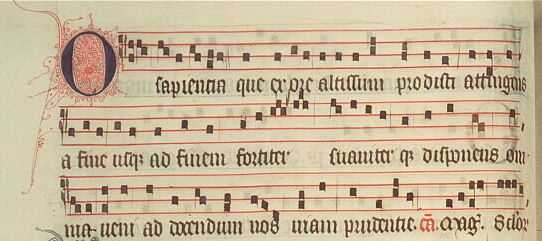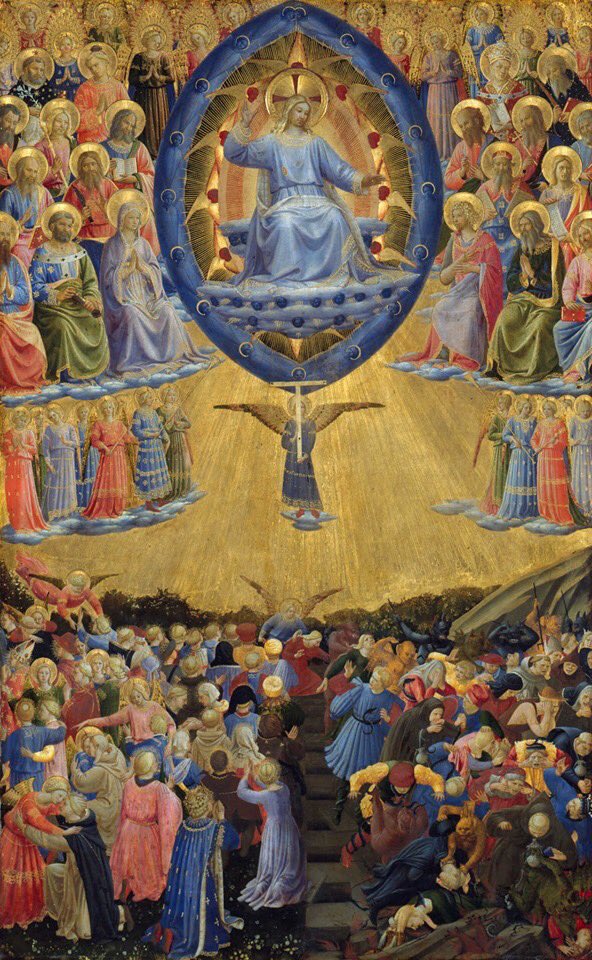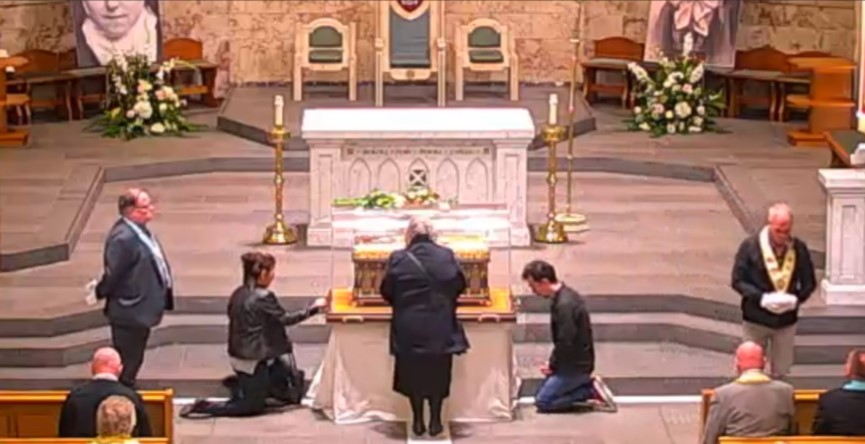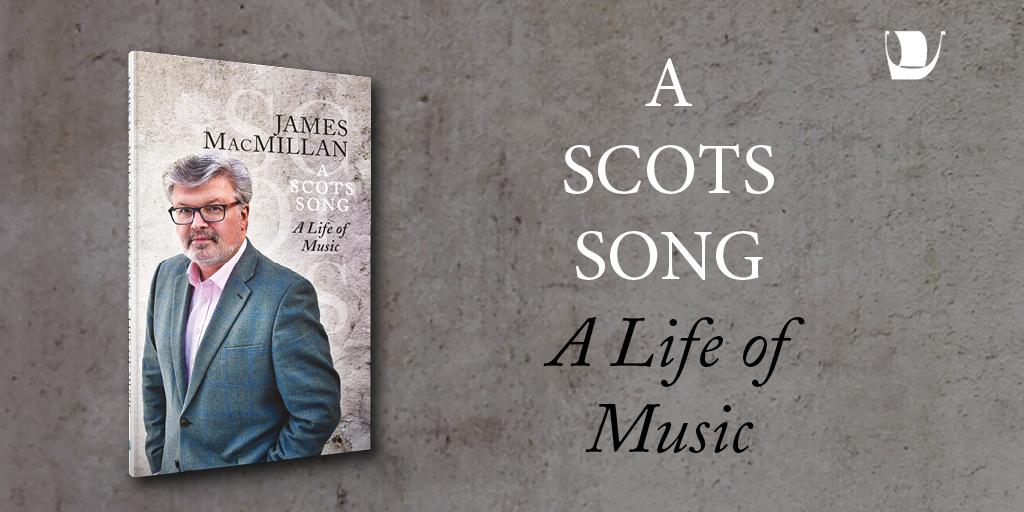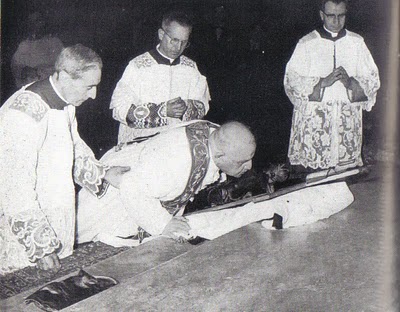You will no doubt have sung this hymn already this year- we are half way through Advent already. This classic Advent hymn consists of the Magnificat Antiphons for the coming week leading up to Christmas. I’ll be posting about each of them individually so, in the meantime, enjoy this beautiful arrangement in Latin sung by the Gesualdo Six and the familiar English below.
St Cecilia Mass, Charles Gonoud
For the feast of St Cecelia I’d like to share the St Cecelia Mass by Charles Gonoud. The work was premiered in 1855 in Saint-Eustache, Paris where is was the custom to premier a new Mass on our saint’s feast day.
November 22.–ST. CECILIA, Virgin, Martyr.
IN the evening of her wedding-day, with the music of the marriage-hymn ringing in her ears, Cecilia, a rich, beautiful, and noble Roman maiden, renewed the vow by which she had consecrated her virginity to God. “Pure be my heart and undefiled my flesh; for I have a spouse you know not of–an angel of my Lord.” The heart of her young husband Valerian was moved by her words; he ‘received Baptism, and within a few days he and his brother Tiburtius, who had been brought by him to a knowledge of the Faith, sealed their confession with their blood. Cecilia only remained. “Do you not know,” was her answer to the threats of the prefect, “that I am the bride of my Lord Jesus Christ?” The death appointed for her was suffocation, and she remained a day and a night in a hot-air bath, heated seven times its wont. But “the flames had no power over her body, neither was a hair of her head singed.” The lictor sent to dispatch her struck with trembling hand the three blows which the law allowed, and left her still alive. For two days and nights Cecilia lay with her head, half severed on the pavement of her bath, fully sensible, and joyfully awaiting her crown; on the third the agony was over, and in 177 the virgin Saint gave back her pure spirit to Christ.
Reflection.–St. Cecilia teaches us to rejoice in every sacrifice as a pledge of our love of Christ, and to welcome sufferings and death as hastening our union with Him.
The Dream of Gerontius: St JH Newman on the four last things
Not long after converting and after having read St John Henry Newman’s Apologia and Loss and Gain, I discovered the Dream of Gerontius. I was aware of Elgar’s setting as a music student but hadn’t studied it or performed it but as a fresh convert, I was beguiled by Newman’s flawless prose- a creative and enthralling communication of the Church’s doctrine on the four last things. Coupled with Elgar’s music, the result is a monumental emersion in the realities of Death, Judgement, Heaven and Hell. There are too many things to comment on in this work so I’ll share my favourite performance.
Elgar was married in the Brompton Oratory and as a wedding gift, his best man gave him a copy of Newman’s poem, The Dream of Gerontius. When he had finished writing his setting of it, Elgar commented to his wife ‘this is the best of me.’ The link to the Brompton Oratory is significant to me because it was there that Mrs Pearce and I attended our first Traditional Latin Mass and I, as another Anglican friend of mine did, knelt at the Lady Altar and asked Her to guide me as to whether I should convert to Catholicism.
If you don’t have a lot of time to do some November reading, take time to immerse yourself in this dramatic presentation of the realities of death. And, Pray for the Holy Souls!
Feast of All Saints: O Quam Gloriosum
Happy feast of All Saints.
Here is a motet by the Spanish Priest composer, Fr Thomas Luis de Victoria- O Quam Gloriosum, complete with beautiful footage from the BBC.
O quam gloriosum est regnum,
in quo cum Christo gaudent omnes Sancti!
Amicti stolis albis,
sequuntur Agnum, quocumque ierit.
O how glorious is the kingdom
in which all the saints rejoice with Christ,
clad in robes of white
they follow the Lamb wherever he goes.
And Fr Victoria’s Mass on the same theme.
Feast of St Luke: The Magnificat
My contribution on the feast of St Luke is to share the only extended quote from Our Blessed Lady, the Magnificat which is found in St Luke’s gospel. A close associate of St Paul, St Luke had a tremendous devotion to Our Lady and there is a consensus that says that he gained the insights into the mysteries of the Nativity from Our Lady Herself.
Continue reading “Feast of St Luke: The Magnificat”CARDINAL BURKE : FULL FILM
St Therese and the restoration of reverence
The last three weeks have been monumental for Scottish Catholics. Thanks to the hard work of Sancta Familia Media and Fr Grant in cooperation with the Bishops of Scotland, the relics of the Little Flower have traveled the length and breadth of the country.
Continue reading “St Therese and the restoration of reverence”Dominus Vobiscum
A protestant and a Catholic walk into Mass… No, it’s not a joke, this occurred in my parish and that Catholic was me.
Continue reading “Dominus Vobiscum”James MacMillan: A Scots Song, A Life of Music
Amazon is clever and has got to know me over the last few years. She is so astute, in fact, that she suggested James MacMillan’s autobiography to me before it was even available. As a music student I was aware of MacMillan’s work and came across some of his liturgical music. Even before I became Catholic, I had excitedly shared his earth-shattering Tu Es Petrus with friends around the time of Pope Benedict’s visit in 2010. The first time I sang chant as at the Musica Sacra day in 2014, the year before I was received into the Church. In some ways, MacMillan has influenced me more than I had realised.
Continue reading “James MacMillan: A Scots Song, A Life of Music”Good Friday- Crux Fidelis (Pange Lingua)
Most Catholics would associate the text Pange Ligua with the hymn for the feast of Corpus Christi by the Angelic Doctor of the Church, St Thomas Aquinas. It is however, from the much earlier chant Pange Lingua by Venantius Fortunatus (530-609) that St Thomas took inspiration. It is worth pondering in this the true nature of tradition: development in seamless continuity with what has been handed down.
Continue reading “Good Friday- Crux Fidelis (Pange Lingua)”